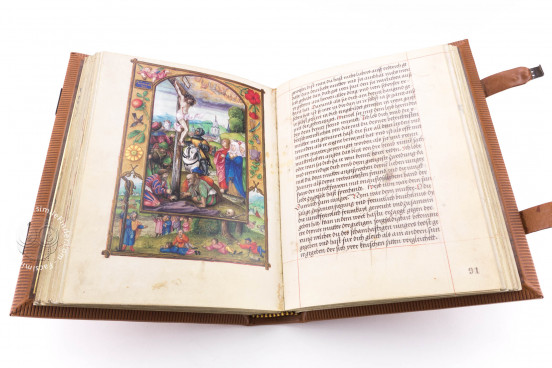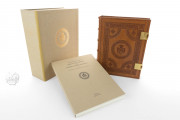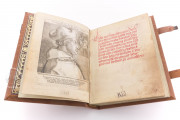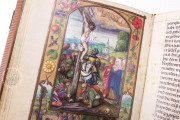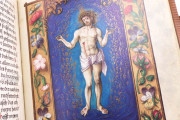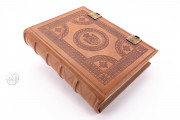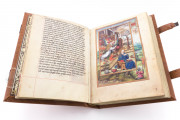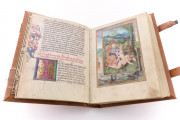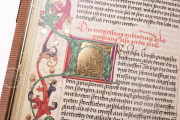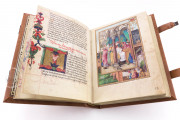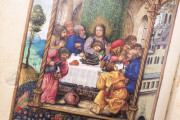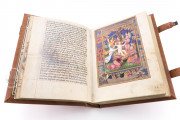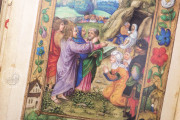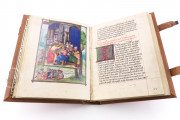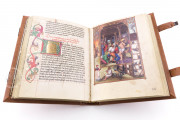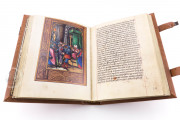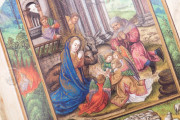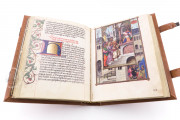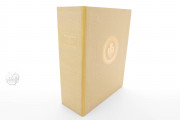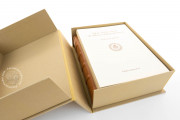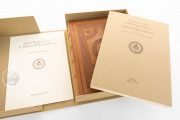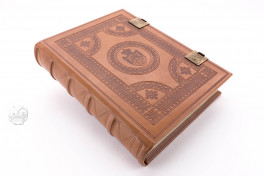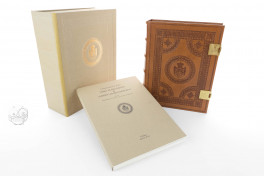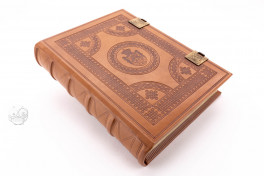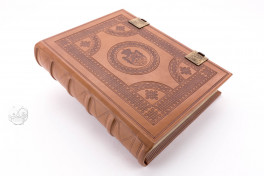Only a few illuminated manuscripts of the late Middle Ages radiate such harmony as the Glockendon Hours, written in German language and executed in 1534. The master of these wonderful miniatures is Nikolaus Glockendon, the most famous descendant of a family of artists based in Nuremberg. The work was made for Albert of Brandenburg, one of the most eminent princes of the Church during the Reformation period.
An Adventurous History
Nothing is known on the destiny of the manuscript after Albert of Brandenburg's death. Only a few facts can be inferred from the property inscriptions in the manuscript. One of these inscriptions goes back to the eighteenth century, naming a count Csobor as the owner of the manuscript.
He stemmed from a highly prestigious Hungarian family. One member of the family had fought in the Thirty Years' War, during which he must have acquired the manuscript, probably a war booty.
The last descendant of the house cared very little about his belongings and had to sell art treasures in his possession for financial reasons, among them the Glockendon Hours.
The work was then sold by a Viennese antiquary to the Marchese Tommaso Obizzi del Cataio, himself the last descendant of his dynasty. After his death, his collections, including our work, went to the Casa d'Este by way of heritage.
Nikolaus Glockendon, the Last Great Master of German Book Illumination
Nikolaus Glockendon, the most important and most talented descendant of a family of artists, was active since the middle of the fifteenth century in Nuremberg. He was influenced by the great German masters of this period, like Dürer, Schongauer or Cranach, an influence which is clearly felt in both duct and colours of his illustrations.
It was the great Albrecht Dürer who, at the beginning of the sixteenth century, had drawn Albert von Brandenburg's attention to the young Glockendon. And also other princes were very well aware of the qualities of our master, like duke John of Saxe and duke Albert of Prussia.
Nuremberg proved an ideal spiritual background for Glockendon's art which should bring forward the last highlight of German book illumination, as the city stood at the height of a glorious period. The splendor of the city was mainly due to its economic upswing but also to sciences and the arts, all flourishing disciplines at the beginning of modern times.
Commissioned by a Prince of the Church
At the age of twenty-three, Albert of Brandenburg was nominated Archbishop of Magdeburg and administrator of the Archdiocese of Halberstadt. Just a few years later, he became Archbishop of Mainz and in 1518 reached the rank of a cardinal.
Even for a member of an important family, this meant a very steep career which obviously cost a lot of money. So Albert was granted the monopoly of selling indulgences in Germany by the Pope Leon X.
The consequences of this trade in indulgences are well known: they cumulated in the Nailing of the Ninetyfive Theses on the Wittenberg church door by Martin Luther.
Nevertheless: a brilliant theologist, Albert of Brandenburg was surrounded by the great German Humanists, like his friend Erasmus of Rotterdam, to mention just one celebrity.
A true lover of the arts, he decorated his residence with the most important German masters. In spite of his position after 1537/38, he belonged to those princes of the Church who tried to mediate between the parties involved in the religious quarrel with Martin Luther.
Illustrations Depicting the Life of Christ
The text is easily understandable, even for readers of today, and decorated with forty-two mindfully colored miniatures on the life of Christ as well as with the sumptuous arms of the Archbishop of Mainz.
The pictures depict scenes from the Old Testament announcing the biblical events of the New Testament in a visionary form. These biblical scenes take place in very concrete medieval surroundings. Glockendon added a copper engraving by Albrecht Dürer from the year 1523.
However, the manuscript is not only distinguished by its magnificent illustrations: another special feature are the sixty-two luxurious initials executed by Glockendon's colleague, the illuminator Georg Stierlein, which fascinate by their lavish ornamentation.
We have 3 facsimiles of the manuscript "Glockendon Hours":
- Libro de Oración de Alberto de Brandenburgo facsimile edition published by M. Moleiro Editor, 1997
- Il Libro di Devozione di Alberto di Brandeburgo facsimile edition published by Il Bulino, edizioni d'arte, 1997
- Glockendon-Gebetbuch facsimile edition published by Faksimile Verlag, 1998

